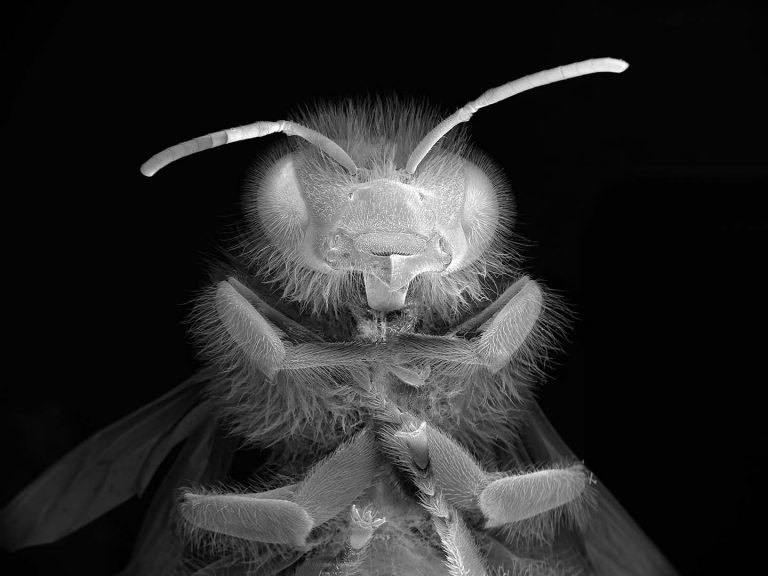We acknowledge the Traditional Owners of the land on which the Queensland Art Gallery | Gallery of Modern Art stands and recognise the creative contribution First Australians make to the art and culture of this country.

Anne Noble / Aotearoa New Zealand b.1954 / Dead Bee Portrait #14 (detail) 2016, printed 2018 / Pigment on paper / 91.5 x 115cm / The Taylor Family Collection. Purchased 2019 with funds from Paul, Sue and Kate Taylor through the Queensland Art Gallery | Gallery of Modern Art Foundation / Collection: Queensland Art Gallery | Gallery of Modern Art / © Anne Noble / Image courtesy: Anne Noble and Two Rooms Gallery, Auckland
Anne NobleDead Bee Portrait #14 2015–2016
Not Currently on Display
Anne Noble’s multi-part project created for APT9 celebrates the importance of the bee in our lives, comprising a working hive of European honeybees, a series of photographs and a video. Noble worked with scientists from the Queensland Brain Institute to design the hive, Conversatio: A cabinet of wonder, and its transparent passage to the outside world, which allowed the bees to enter their hive inside the Gallery. The hive was opened several times a day so that visitors could observe the growing bee community.
A series of ‘Dead bee portraits’ were displayed alongside Conversatio: A cabinet of wonder. Images of dead bees were scanned under an electron microscope and the data turned into photographs. Also included was a video work called Reverie 2016 that creates a dreamlike environment inspired by the sounds and smells of a beehive. The artist wants her project to spark new conversations about the important role of bees in our world.
New Zealand artist Anne Noble has been a practising photographer since the 1970s. Her varied subjects have included a London convent, the Antarctic wilderness, coastal landscapes of New Zealand, and her father’s body after death. Noble builds a picture through series of images, creating depth and intimacy in what she refers to as ‘essays’ of photographic images.
Anne Noble’s practice encourages viewers to spend time engaged in the act of looking. In recent years, she has turned her attention to the subject of the honey bee, a small creature symbolic of our world’s wellbeing. The artist’s interest in bees was sparked by keeping her own beehives at her home in New Zealand.